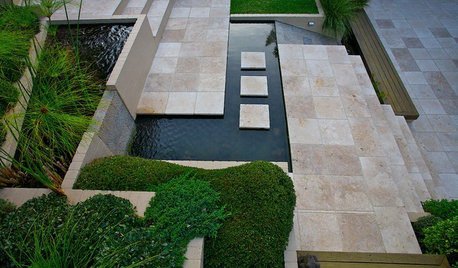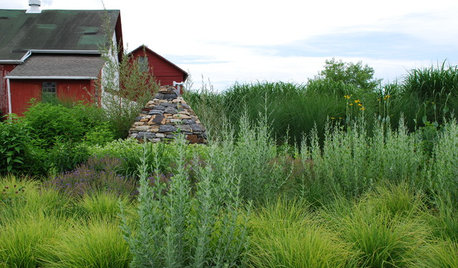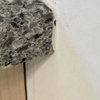What does 'Travertine' mean?
dallen11
12 years ago
Related Stories

DECORATING GUIDESVintage Modern: What Does It Mean?
Objects With History Warm Up Clean Lines in Fresh, Eclectic Interiors
Full Story
REMODELING GUIDESBathroom Workbook: How Much Does a Bathroom Remodel Cost?
Learn what features to expect for $3,000 to $100,000-plus, to help you plan your bathroom remodel
Full Story
INSIDE HOUZZHow Much Does a Remodel Cost, and How Long Does It Take?
The 2016 Houzz & Home survey asked 120,000 Houzzers about their renovation projects. Here’s what they said
Full Story
LIFEHouzz Call: What Does Summer Look Like at Your Home?
Kids, water, sunshine, backyards, cold drinks — share photos of what summer at home means to you
Full Story
PATIOSLandscape Paving 101: Travertine Keeps Its Cool in Warm Climates
Travertine is a gorgeous paver for a pool surround
Full Story
REMODELING GUIDESContractor Tips: What Your Contractor Really Means
Translate your contractor's lingo to get the communication on your home project right
Full Story
DECORATING GUIDES8 Ways to Decorate With Love and Meaning
Surround yourself with happy memories, inspiring messages and delightful drawings for a home that brings joy every day
Full Story
LANDSCAPE DESIGNMysticism and Meaning Meet in an Ohio Artist’s Gardens
Step into landscape scenes rife with symbolism, inspired by math, philosophy and the stars
Full Story
LANDSCAPE DESIGNProblem Solving With the Pros: An Abundant Garden Stretches Its Means
Swaths of resilient, eye-catching plants thrive with little care or resources in the landscape of a Pennsylvania farmhouse
Full Story
ARCHITECTURE10 Custom Doors That Uncover Meaning
Break out of the standard-door rut by learning a significance that few people ever consider
Full StorySponsored
Central Ohio's Trusted Home Remodeler Specializing in Kitchens & Baths
More Discussions











davidro1
Avanti Tile & Stone / Stonetech
Related Professionals
Federal Heights Kitchen & Bathroom Designers · Hemet Kitchen & Bathroom Designers · Ojus Kitchen & Bathroom Designers · Philadelphia Kitchen & Bathroom Designers · Pike Creek Valley Kitchen & Bathroom Designers · San Jose Kitchen & Bathroom Designers · Woodlawn Kitchen & Bathroom Designers · South Farmingdale Kitchen & Bathroom Designers · Bloomingdale Kitchen & Bathroom Remodelers · Tempe Kitchen & Bathroom Remodelers · Middlesex Kitchen & Bathroom Remodelers · Land O Lakes Cabinets & Cabinetry · Lindenhurst Cabinets & Cabinetry · North Massapequa Cabinets & Cabinetry · Santa Monica Tile and Stone Contractorsangie_diy
davidro1
angie_diy
xoldtimecarpenter
davidro1
CEFreeman
davidro1
angie_diy